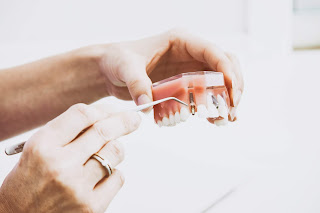Dental implants when bone is missing
Guided Bone Regeneration Technique Favors Dental Implant Placement When Bone is Missing.
The guided bone regeneration technique, used to facilitate bone formation in jaw defects, has been successfully used to correctly place dental implants when the adequate bone volume is required. The method, based on bioengineering, allows better results than bone grafting, using other elements: a biomaterial and membranes.
A biomaterial is a granulated compound whose only function is to serve as a scaffold for the bone cells that will form the bone and recover the lost volume. The membrane consists of a thin sheet that will cover the biomaterial and help to maintain the clot, facilitating the arrival of the bone-forming cells.
According to Dr. Patrick Janne, facial surgeon, "using this technique, the great majority of bone defects can be recovered, although in the case of smokers or if there is inflammation of the gums, the response of the tissues to this technique is diminished. Thus, smoking reduces the healing speed of the gum by half".
Before its application, Dr. Patrick Janne recommends "studying the defect to be treated using a three-dimensional x-ray to foresee any inconvenience." The surgical technique can be performed under local anesthesia, and its duration does not exceed one hour in the most common cases. One of its advantages is that it can be performed simultaneously with the placement of the implants. In these cases, after their completion, it is necessary to release the pressure zone and follow healthy habits. It is required to wait about four or six months for the defect to be filled with bone. Once the fault has regenerated, the bone will have recovered its function.

